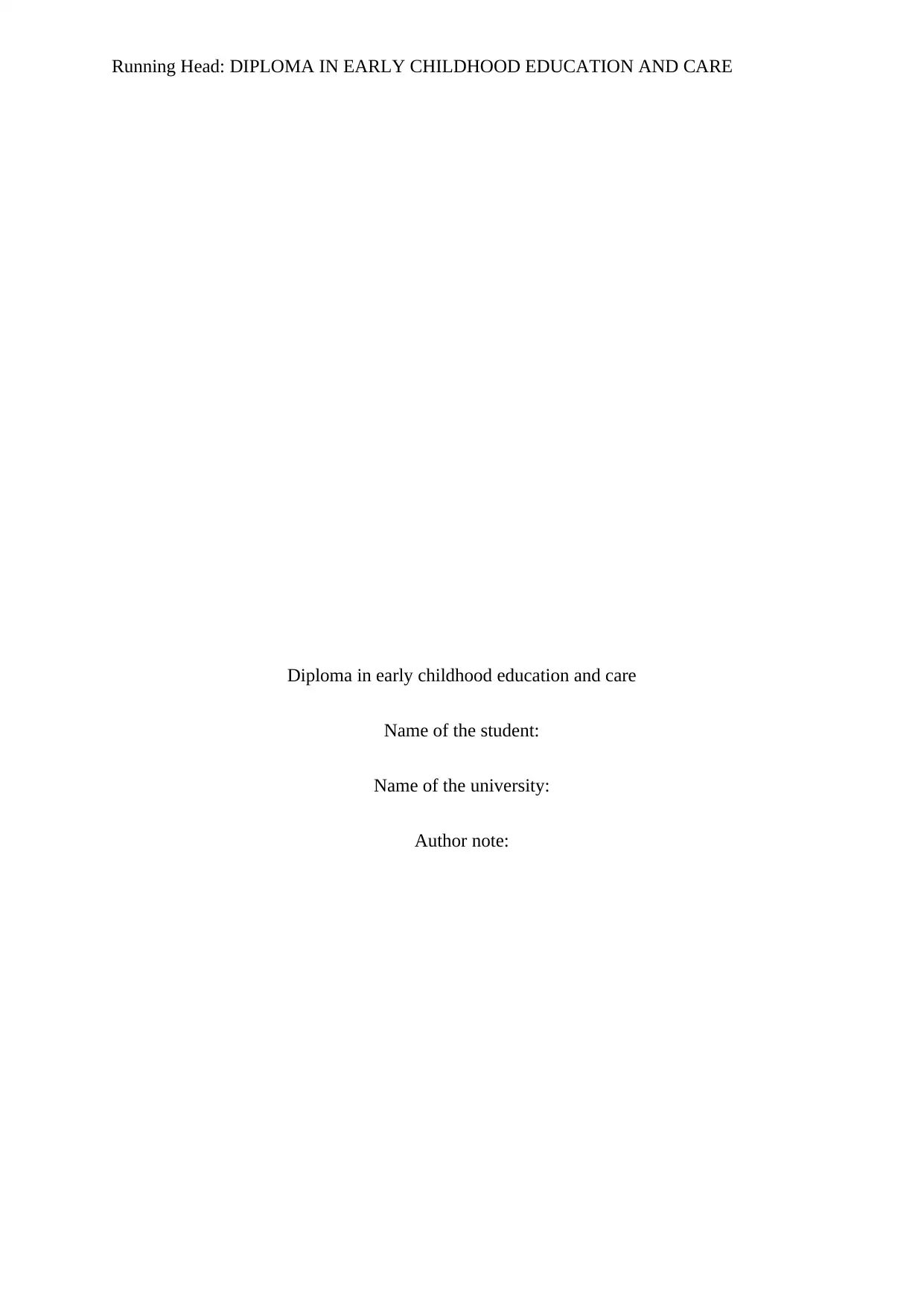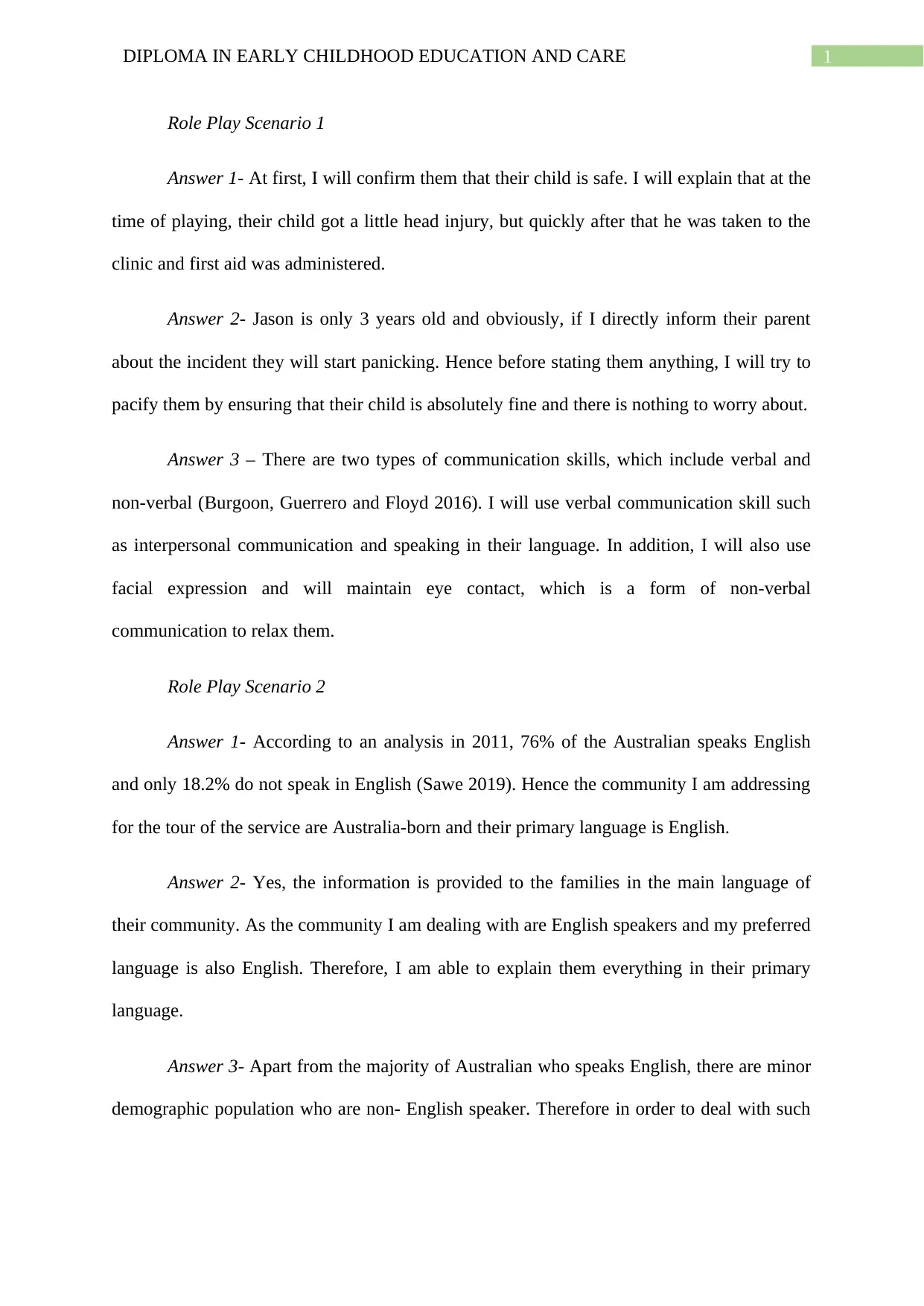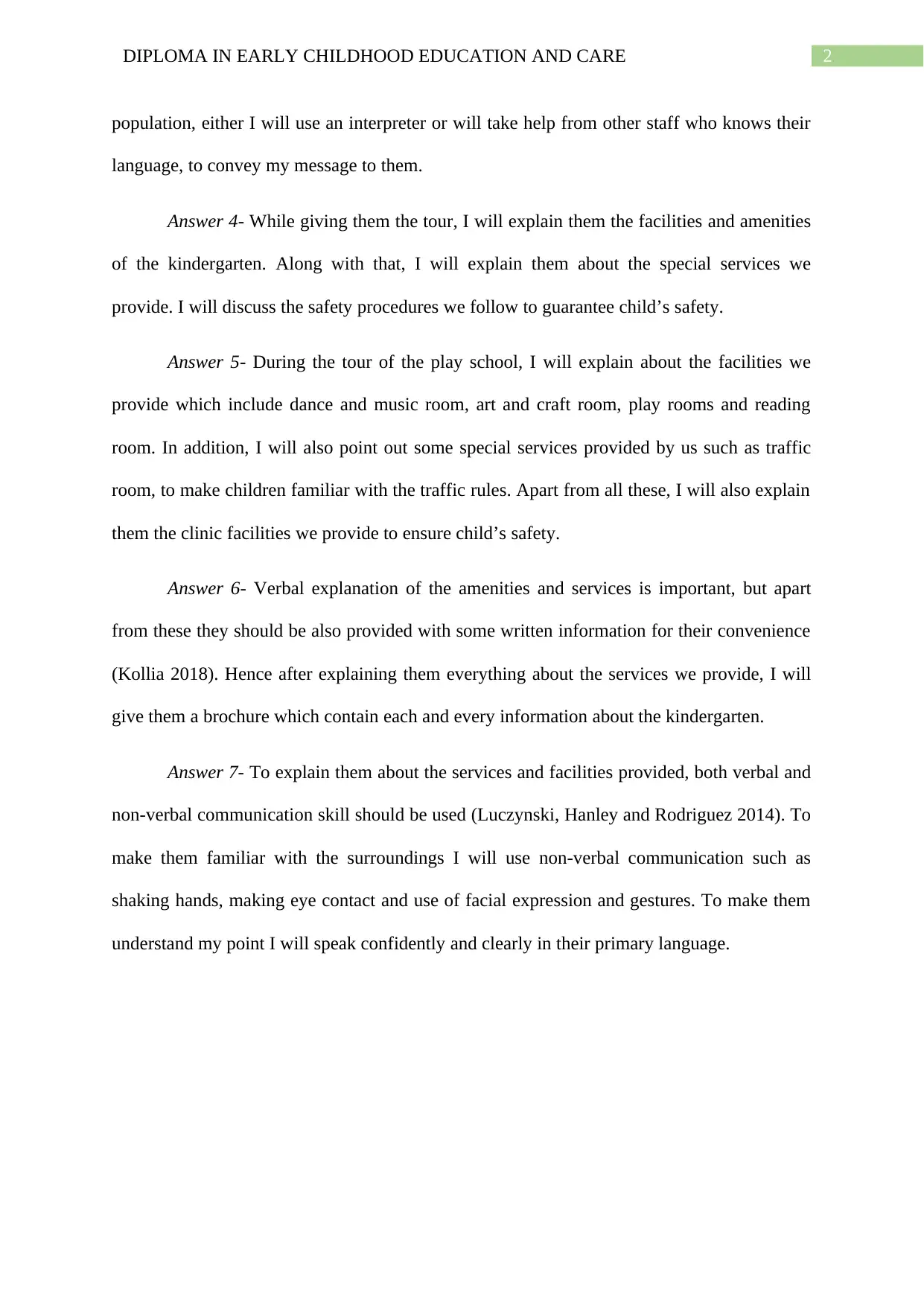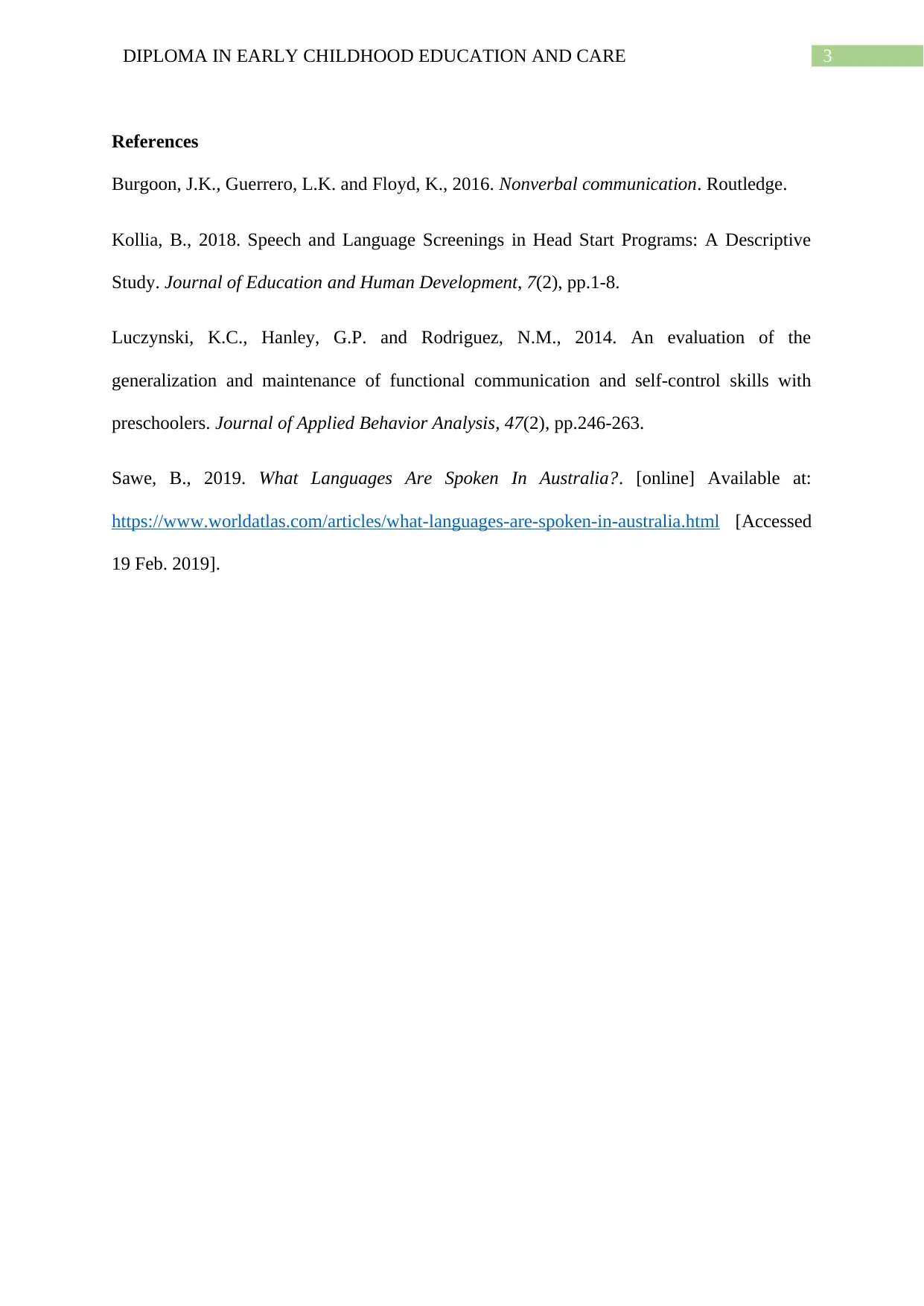Analyzing Role Play Scenarios: Diploma in Early Childhood Education
VerifiedAdded on 2023/04/21
|4
|789
|160
Case Study
AI Summary
This document presents solutions to two role-play scenarios within the context of a Diploma in Early Childhood Education and Care. The first scenario addresses a situation where a child sustains a minor head injury during playtime, focusing on how to communicate effectively with the parents, emphasizing reassurance and providing accurate information about the incident and the first aid administered. The response highlights the importance of verbal and non-verbal communication skills in calming parental anxieties. The second scenario involves conducting a tour of a kindergarten for prospective families, primarily English speakers, detailing how to convey information about the kindergarten's facilities, special services like traffic safety education, and safety procedures. It emphasizes the use of both verbal explanations and written materials, such as brochures, to ensure clarity and convenience for the families. The solutions also consider strategies for communicating with non-English speaking families, such as using interpreters or seeking assistance from multilingual staff members, ensuring inclusivity and effective communication for all.
1 out of 4










![Diploma in Early Childhood Education Assignment - [University Name]](/_next/image/?url=https%3A%2F%2Fdesklib.com%2Fmedia%2Fimages%2Fim%2F9ec57b9d282b457796267c3de395758c.jpg&w=256&q=75)
![[object Object]](/_next/static/media/star-bottom.7253800d.svg)